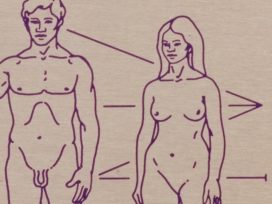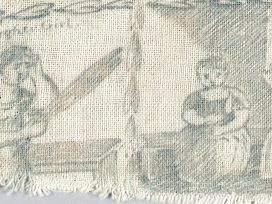Gender representation in the organizations essential to journal publication
When I first met Christian Demand in spring 2011 for our first preparatory meeting ahead of Christian taking up the post of Merkur editor in January 2012, his first question was why in fact there were so few texts by women authors published in Merkur, and if it was at all possible that some kind of politics was at play in this respect – and, if so, which kind.
At the time, I answered that there had been next to no manuscripts submitted by female authors, certainly no more than five per cent of the total; these were then sorted according to quality and thematic relevance. My answer would likely apply now just as it did then because, in spite of the new editorial team’s commitment and the extensive efforts, the situation has not changed substantially at all.
Merkur draws upon both unsolicited texts and those commissioned with authors already known to us, as well as non-German language texts we have acquired the rights to. Up until today, the number of submissions from female authors has scarcely changed, if at all; this in spite of the December 2012 issue, which intentionally consisted, following a great effort, of pieces exclusively by female authors: even if a single author had failed to submit her text, or submit it on time, we would not have been able to bring this issue out. Thus, now as then, out of 100 manuscripts submitted, five at the most are by women, despite the intention behind the “women’s issue”: that is, to make female authors feel they were being addressed, and encouraged to submit more texts.
Gender and cultural journals
Eurozine partner journals are not unique in being dominated by male editors and contributors. But what’s the bigger picture regarding gender and cultural journals? Do journals have the resources to deal with it? And what role does gender play, if any, where commissioning patterns and content are concerned?
Eurozine asked selected partner journals to respond to a European survey on gender and cultural journals that examines these issues in greater depth.
Dialogi, Slovenia
Soundings, UK
Syn og Segn, Norway
Esprit, France
Merkur, Germany
Gernero, Serbia
ResPublica Nova, Poland
Spilne, Ukraine
L’Homme, Austria
We have not applied any kind of quota. Among the reasons for not doing so is this: the decisive factor that leads to the publication of a manuscript in
Merkur has always been and remains its quality and the subject matter – and not the name and/or the gender of the author.
The editorial team has been able to admit some new female authors to Merkur‘s pool of regular contributors; other female authors, such as Kathrin Passig, Birgit Recki and Hannelore Schlaffer, had already been published under the previous editors.
What are the possible grounds for the underrepresentation of female contributors?
We suspect that the essay genre itself may be one reason. It is generally rather rare that female authors trust themselves to write an essay: to boldly launch and defend against the mainstream, in text form, a grand thesis, with all of its big, sometimes blatantly outlandish ideas. Texts by women authors tend to avoid such “grand” (and sometimes “pretentious”) theses and deal instead with matters on a more modest scale; care is taken to (scholarly) document everything and the final product tends to be somewhat more tentative and cautious in its assertions than that of a male author. (Exceptions, as ever, prove the rule.)
Another ground is often suspected, that is, that women are far more reluctant to offer something unfinished or merely a rough outline of their line of thought, usually because they do not consider it to be “enough”, or ready for publication. Moreover, women appear to operate on the basis of an economy of time and form of time management that is completely different from that of men. It happens that we request a manuscript from a female author who then grudgingly declines due to “time pressures”, because she already realizes months in advance of the deadline that she will likely end up with too little time to fulfil her other commitments. In contrast to which, men tend to take on every obligation and possibly only reach the point then, at the deadline itself, at which something has to give: that is, they submit nothing or something much later or something half-finished or raw (that the editorial team then polishes up). However, all of this is merely conjecture.
Figures
In 2012, 147 individual contributions were published in Merkur, of which 127 were by male and 20 by female authors. The figures are only this “good”, because of the December issue having included exclusively female authors.
In 2013, of 152 contributions in total, 15 were by women and 137 by men.
Gender representation within Merkur’s editorial team
The editorial team consists of the editor-in-chief, who works on a freelance basis, and Ekkehard Knörer as editor, who has a full-time position. My post is 30 hours per week (I was hired in 1998 as a secretary). This means I am the only woman and I have the only part-time position.
Since 2012, under the new editor-in-chief, the division of labour has changed such that I have been entrusted with more editorial work of a more demanding nature. This is, inter alia, because working life here is now less hierarchically structured than previously.






